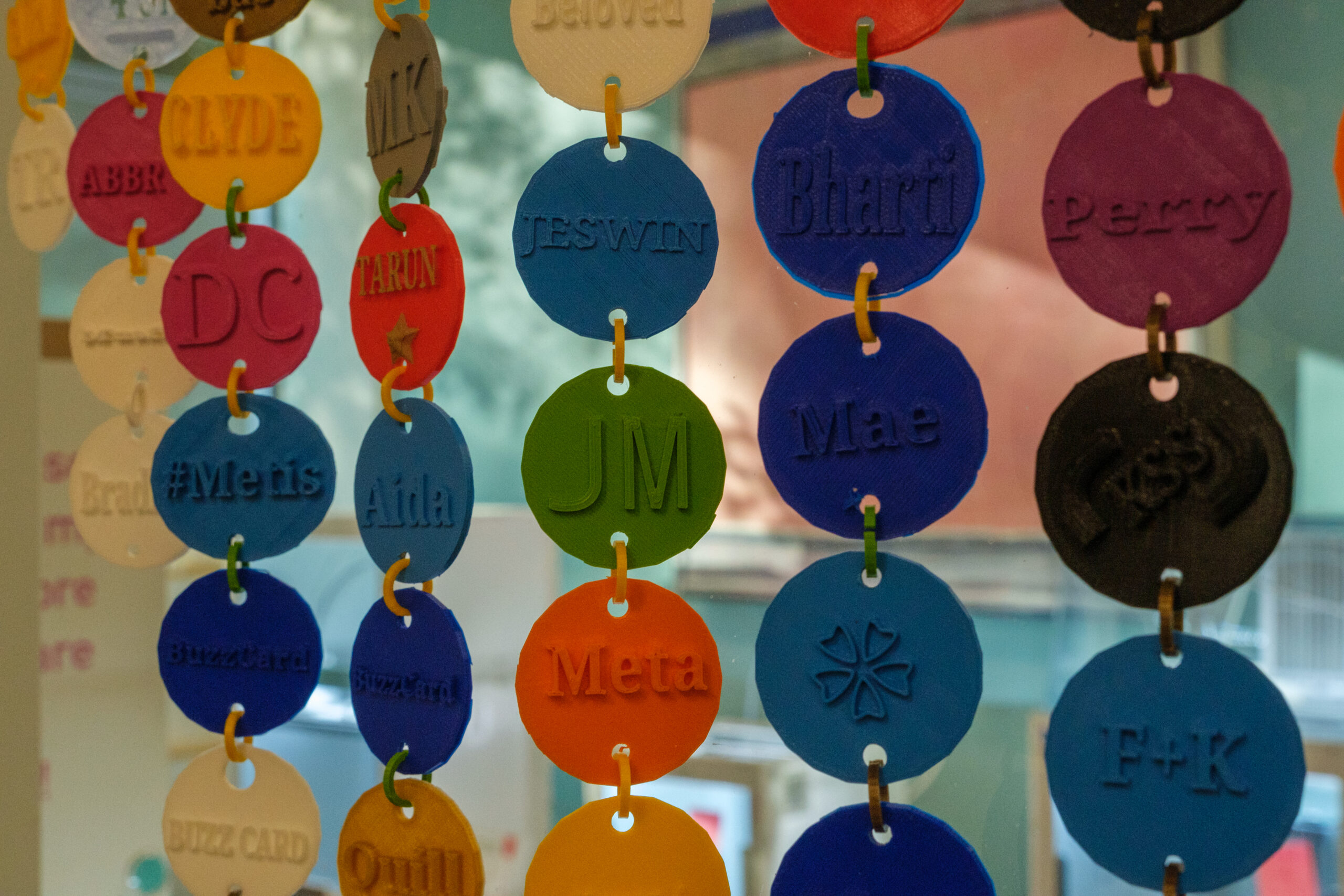I give a talk when classes and other groups visit the Makerspace that is meant to explain what we are, how we can be used, and hopefully makes them feel welcome. That’s a lot to accomplish and in the first year or so I was trying to fit in too many details, which made the talk overwhelming, even to me. The important parts were often drowned out by all the details.
This year, I took advice from Design Is Storytelling by Ellen Luptin and The Art of Gathering by Priya Parker and redesigned the talk to be shorter, punchier, and focused on values and calls to action. One thing I added is that I now end with 3 challenges. I’ll share them here along with some comments about how they connect with the values I ‘m trying to promote in the space.
Make something personally meaningful to you
“Making as learning works best when you have a personally meaningful project. When a project means something to you, you will work harder to make your vision a reality — your vision will be here (usually I show right hand wayyy to the right) and your current abilities will be here (show left hand wayyy to the left) and you will do all the things you need to do to close the gap between them. This might mean starting over a couple of times, learning new skills, and finding people to help you. What you do in Makerspace doesn’t need to be connected to your classes, so think about how you might use the Makerspace for something you really care about.”
In my experience, personally meaningful projects really do result more learning, better stories, higher-order learning outcomes, and more creative objects. That is why we don’t require users to only use the space for class assignments. It’s important to give users explicit permission to make something they care about because they often think they can only use the space for class assignments. This is especially true for equity-seeking groups who don’t see themselves as allowed to use the space.
This is also why I require faculty who want to use Makerspace for assignments to give students choice about what modality/tool they use and as much freedom as possible for what they are making. Makerspace assignments that require everyone do the same thing (e.g. 3D print a particular kind of object) aren’t really makerspace assignments, they are lab assignments that happen in the Makerspace.
Make a story illustrated by an object
“Sometimes we get too focused on the things we are making and lose sight of why we are making it. This can cause us to make the thing we can already make, instead of what we actually want to make. Instead, try thinking about what you’re doing as telling a story that is illustrated by the thing you’re making. Why are you making this thing? Who is it for? What will it mean to you and others? What impact, good and bad, might it have? Who helped you make it? Think of the story as a container for the thing you’re making that explains what it is meant to be and why it is important.”
I’ve written before about stories being the proper way to talk about outcomes in makerspaces and this challenge is really about starting with that idea by getting people to use stories as framing devices for their projects. Users often become hyper-fixated on what is possible instead of thinking about what they really want to make. Being practical has its place, but often I want them to think bigger instead of thinking practically. Stories help them do that by giving them an outcome that is achievable even if the thing they want to make is going to require a lot more work, resources, collaborators, time, etc.
Stories also foreground what is meaningful about what they are doing, and how it fits into a social/ecological context of place, community, nature, class, etc. It makes them think about the people who will use the things, and the people who helped them make the things.
Make a gift for someone
“The third challenge links the first two: Consider making the first real thing you do in Makerspace a gift. Gifts make things meaningful and ties them to stories about people and community. It helps us think about who the thing is for, how it will be used, and if it will have a positive impact. Consider making a gift for a friend, a family member, or a community organization. The identity token you 3D print in Makerspace is a gift for the space: a piece of communal art that shows the impact of our community.”
This challenge has a number of purposes. Giving the first thing you make after learning a new skill is an important part of Indigenous teaching, and this challenge is meant to bring that learning and spirit into Makerspace. It is also the last thing I say in the welcome talk, and so it is a bookend to the land acknowledgement that I use to open to the talk, which includes a call to be good stewards of the land, resources, and community. In this way it is meant to subtly help users see that they are anchored in a community and that they have a responsibility/role to make it a good community that has a positive impact.
Hooks not Directives
I think of these challenges as hooks I’m establishing that users might later use when thinking about what they are doing, and why they are doing it. They aren’t meant to be rules or directives, they are meant to subtly shift users towards thinking more ambitiously and about context and community.
